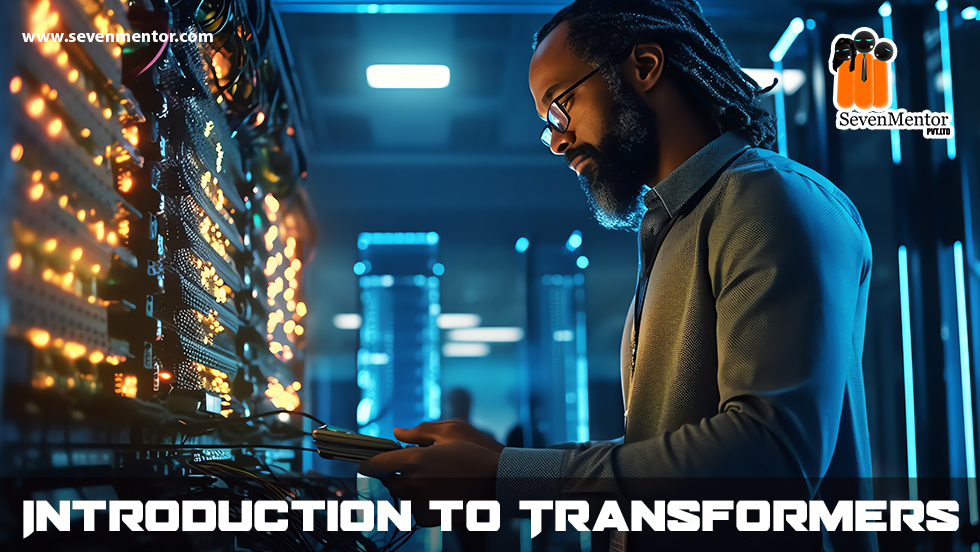Introduction to Transformers
In the vast realm of deep learning, one name that has been making waves is “Transformers.” No, we’re not talking about the shape-shifting robots from the movies. We’re referring to a powerful architecture that has revolutionized the way machines understand and process language. In this blog, we’ll unravel the mystery behind Introduction to Transformers, exploring what they are, how they work, and why they’re so crucial in the world of artificial intelligence.
Understanding the Basics
Let’s start with the basics. At its core, a transformer is a type of deep learning model architecture introduced in a groundbreaking paper titled “Attention is All You Need” by researchers at Google in 2017. Unlike traditional sequence-to-sequence models that rely heavily on Recurrent Neural Networks (RNNs) or long short-term memory networks (LSTMs), transformers employ a mechanism called self-attention.
Self-Attention Mechanism
Imagine you’re reading a sentence. In a traditional model, the network processes one word at a time, moving sequentially through the sentence. However, transformers approach this differently. They use self-attention to weigh the importance of each word in the sentence concerning the others. This allows the model to focus more on relevant words and less on irrelevant ones.
For Free, Demo classes Call: 020-71173071
Registration Link: CCNA Training in Pune!
Think of self-attention as a spotlight — it shines brightly on the words that matter most, helping the model capture intricate relationships and dependencies within the input data. This mechanism enables transformers to excel at tasks involving sequential data, such as language translation, text summarization, and sentiment analysis.
Key Components of Transformers
Transformers consist of several key components, each playing a crucial role in their success:
1. Encoder and Decoder:
— The encoder processes the input data, while the decoder generates the output. — Both the encoder and decoder are composed of multiple layers, each containing a self-attention mechanism and a feedforward neural network.
2. Attention Heads:
— Within the self-attention mechanism, transformers use attention heads to focus on different
aspects of the input.
— Multiple attention heads allow the model to capture various patterns simultaneously.
3. Multi-Head Attention:
— This is a fusion of information from multiple attention heads, providing a richer representation of the input data.
4. Positional Encoding:
— Transformers do not inherently understand the order of the input sequence. Positional encoding is added to the input embedding to provide information about the position of each word in the sequence.
For Free, Demo classes Call: 020-71173071
Registration Link: Click Here!
Benefits of Transformers
Now that we’ve covered the basics, let’s explore why transformers have become the go-to architecture for many natural language processing tasks:
1. Parallelization:
— Unlike RNNs, transformers can process input sequences in parallel, leading to faster training times.
2. Long-Range Dependencies:
— Transformers excel at capturing long-range dependencies in data, making them ideal for tasks requiring a deep understanding of context.
3. Scalability:
— Transformers are highly scalable, allowing researchers and developers to build larger and more powerful models.
4. Transfer Learning:
— Pre-trained transformer models, such as BERT (Bidirectional Encoder Representations from Transformers) and GPT (Generative Pre-trained Transformer), have become instrumental in transfer learning, where models trained on vast datasets can be fine-tuned for specific tasks with relatively small amounts of task-specific data.
For Free, Demo classes Call: 020-71173071
Registration Link: Click Here!
Applications of Transformers
The versatility of transformers has led to their widespread adoption across various applications:
1. Language Translation:
— Transformers have revolutionized machine translation, achieving state-of-the-art performance in tasks like English-to-French translation.
2. Text Summarization:
— Extractive and abstractive summarization tasks benefit from transformers’ ability to understand the context and generate coherent summaries.
3. Sentiment Analysis:
— Analysing sentiments in text becomes more accurate with transformers, as they can grasp the nuances and context of language.
4. Question-Answering Systems:
— Transformers have proven effective in developing question-answering systems and understanding the relationship between questions and relevant portions of text.
Do visit our channel to learn more: Click Here
Conclusion
In the world of deep learning, transformers stand as a testament to the power of innovation. Their ability to capture complex patterns, understand context, and process data in parallel has elevated them to a position of prominence in natural language processing tasks. As technology continues to advance, transformers will likely play a crucial role in shaping the future of artificial intelligence, making machines not just understand language but comprehend it in a way that was once thought impossible. So, the next time you hear about Transformers, remember — it’s not just a Hollywood blockbuster; it’s the driving force behind some of the most remarkable advancements in AI.
Author:
Nishesh Gogia
Call the Trainer and Book your free demo Class For CCNA Call now!!!
| SevenMentor Pvt Ltd.
© Copyright 2021 | SevenMentor Pvt Ltd.

